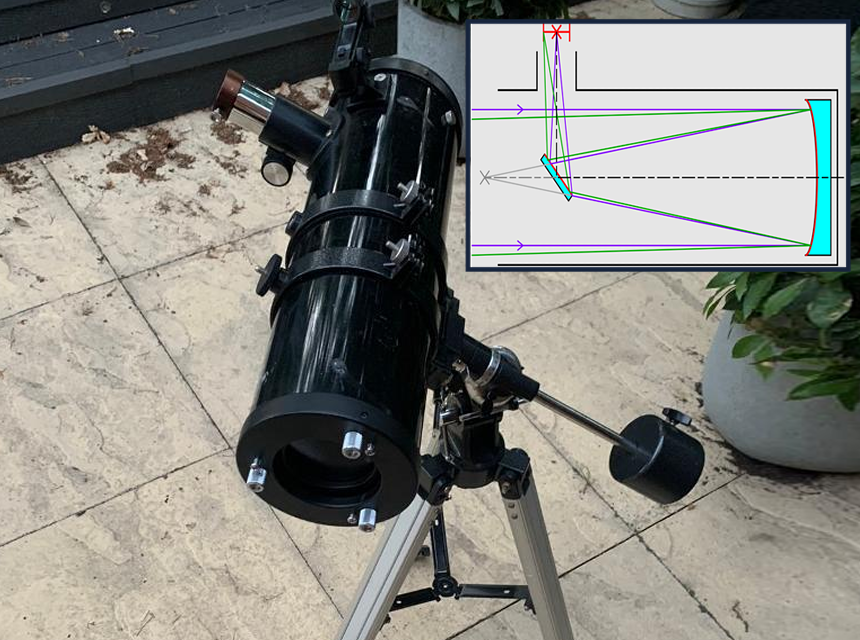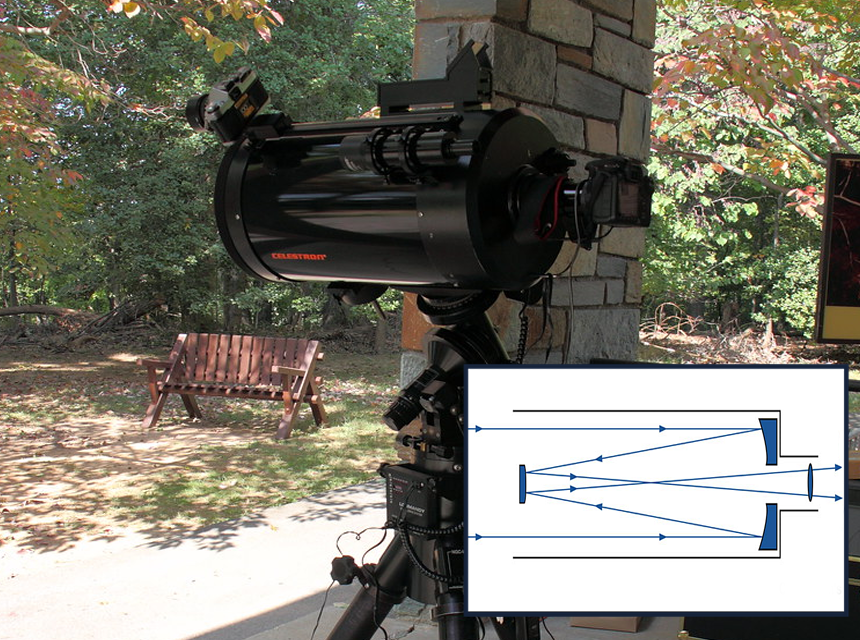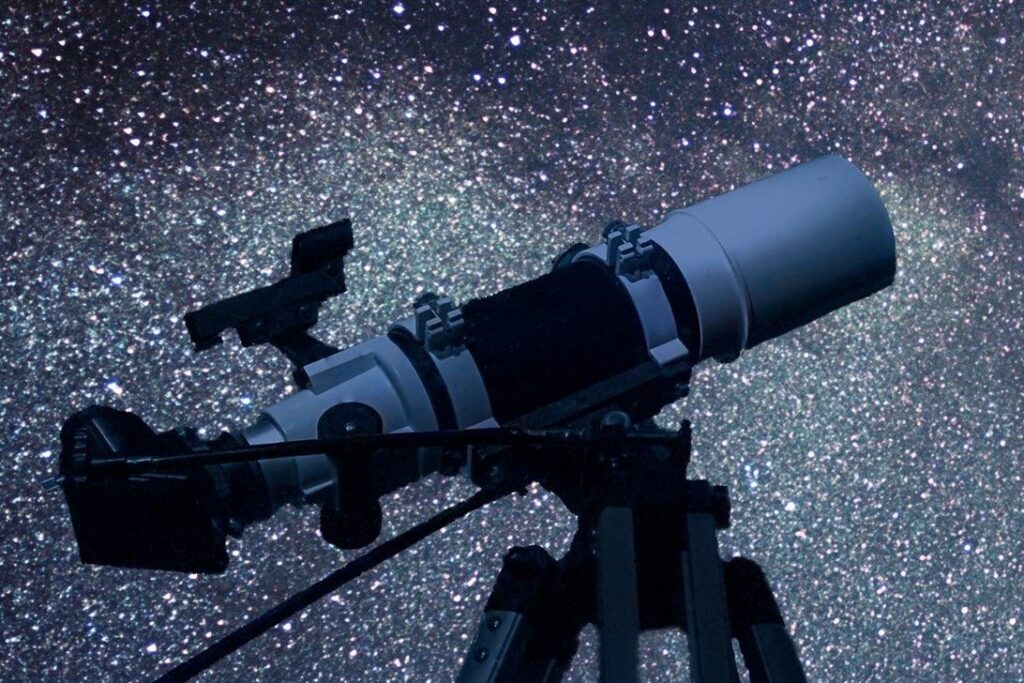The recent buzz surrounding the launch of the Webb telescope has inspired a lot of people to look at the universe in a completely different light. In fact, you might be thinking about investing in your own telescope to get your own glimpse of the stars. Choosing a telescope comes down to two choices-refractor vs a reflector telescope – how do they differ? Is one type better than the other, especially for beginners? And more importantly, how do their different setups affect the way you view different celestial objects?
Essentially, the most significant difference is that refractor telescopes have lenses while reflector telescopes have mirrors. Keep reading as we take a more detailed look at how they compare. We’ll also take an in-depth look at the pros and cons of both versions. By the end of our article, you’ll have a better idea of whether you prefer a refractor or reflector telescope for your specific needs.
As you begin your search for the best option for your night sky viewing, it’s essential to understand a few telescope basics, especially if you’re a beginner. Understanding how telescopes work will give you a better indication of what you’d like to view with them. Once you know that, it becomes easier to know if you prefer the features of a refractor or a reflecting telescope.
Most telescopes work by simply using a few curved mirrors (and/or) lenses to gather and focus light and images from the night sky. The most basic telescopes have two lenses. The larger of the two lenses collects the light from a distant object and amplifies the image so that it’s brighter and, therefore, easier to see.
Aperture is the most important factor to consider with any telescope. Simply put, aperture refers to the diameter of the telescope’s main component, which can be either a lens (refractive) or a mirror (reflecting). A telescope’s aperture determines how sharp the image will appear (resolving power) as well as how bright the image appears (light-gathering ability).
Aperture is primarily measured in millimeters or inches, and if you’re a beginner, you’ll be looking for a telescope with a higher aperture.
Reflection Trusted Source Reflection of light — Science Learning Hub Reflection is when light bounces off an object. If the surface is smooth and shiny, like glass, water or polished metal, the light will reflect at the same angle as it hit the surface. www.sciencelearn.org.nz refers to the concept of light striking a concave mirror and then turning in another direction. The mirrors collect light from objects in space and form an image. Usually, the first mirror is wider and reflects the image in a smaller mirror. The smaller mirror then reflects the light to an eyepiece lens which enlarges or magnifies the image, making it easier to see. Refraction Trusted Source Refraction of light — Science Learning Hub Refraction is the bending of light (it also happens with sound, water and other waves) as it passes from one transparent substance into another. www.sciencelearn.org.nz refers to the change in speed and direction of light as it passes from one medium to another. It works by using a convex lens to refract (or bend) the light toward the second lens, which is essentially the eyepiece.
This refers to the path that light travels through the optical tube of a telescope. Measured in millimeters, the focal length is the distance between your telescope’s primary lens/mirror and the exact point where light rays meet to focus and create the image you eventually see. The focal ratio is measured by dividing the focal length of the aperture by the aperture. It’s expressed as F#, such as f/5 and f10. Again, if you’re a beginner buying your first telescope, you should consider the following:
Collimation is the process of aligning the various components in a telescope to bring the light into the best possible focus. Reflecting telescopes require more collimation than their refracting counterparts. This can be done manually or by using collimation tools.
As the name suggests, a refracting telescope is so called because of its refraction abilities. Light is bent (refracted) as it moves from one medium to another, essential air to glass. Also referred to as a refractor telescope, this type of telescope contains two lenses situated on its front. The eyepiece magnifies what you see, while the objective lens collects the light. You’ll also find a tube attached to the eyepiece. The light goes into the front lens and moves down the telescope till it reaches the eyepiece lens. It’s at this point that the light gets magnified, and you see the image.
Ideally, refractor telescopes are used for viewing planets and moons. They’re also great for viewing double stars – a pair of stars that are regarded as being close together from the earth’s vantage point. Celestial objects with contrasting lights look much better through these types of telescopes. One of the more popular refractor telescopes to consider is, without a doubt, the MaxUSee Travel Telescope with Backpack. This model is ideal for both astronomical observations as well as land viewing. With a 70mm large aperture objective lens, you can expect brighter and clearer images.
The package also includes two 1.25” Kellner eyepieces and a 3x Barlow lens which will allow you to enjoy an excellent magnification of 20X to 132X. This type of magnification is almost triple that of the model’s own magnification. While most telescopes produce an upside-down image, this model boasts a 45°Diagonal Prism which enables you to view the image upright. Some of the nifty add-ons that you can enjoy with this package include full-size HD binoculars. A universal smartphone adapter that makes it easy to record the images you’re looking at. A rugged backpack makes it easy to transport and store your telescope, tripod, and other accessories. It’s the ideal package for stargazers who like to travel with their telescope!
Considering the pros and cons of a refracting telescope is the best way to decide if this model is what you need. Let’s dive right in.
The concept that makes a reflecting telescope is quite simple. Concave mirrors enable light to travel down the telescope tube, where it reflects another mirror closer to the top. Then, the light is pointed into the telescope’s eyepiece, which magnifies the image. Reflectors are excellent for viewing deep-sky objects such as distant constellations. It’s important to point out that they take some getting used to as they’re tricky to set up and focus on. This can be challenging for beginners.
On that note, we should also add that the bulk of telescopes used for research-type astronomy are reflectors. The main reason for that is that they work in a much wider spectrum of light. Additionally, some light wavelengths are better absorbed as they move through reflector telescopes. Reflector telescopes involve collimation, which will require about 10 minutes at each new location.
When it comes to reflecting telescopes, there are a few common options to discuss.

The most prominent type of reflecting telescope is the Newtonian reflecting type. It’s also the most commonly made and sold globally. This design is considerably cheaper to manufacture quality mirrors than lenses. It works by using a concave, parabolic mirror to focus light. The image produced is essentially upside-down because it’s rotated at 180°. At the same time, this isn’t a significant problem for astronomical viewings because there is really no up or down angle in space. This type of upside-down image is actually only a problem if you’re using the telescope to view terrestrial observations.

Since some Cassegrain reflectors don’t feature a hole in the mirror but rather use a small plain mirror located in front of the primary mirror. As this happens, the light is reflected outside the main tube. Additionally, these telescopes are smaller and more compact, making them easier to carry around.
The Celestron-NexStar 5SE Telescope for Beginners and Advanced Users is a firm favorite in the Cassegrain range. As a computerized telescope, this model boasts Celestron’s iconic orange tube design that makes stargazing equally enjoyable for beginners and experienced observers alike. With a 5-inch aperture, stargazers can expect the best light-gathering ability.
This interesting model also boasts a fully-automated database that contains more than 40,000 celestial objects. Since this feature is built into your telescope, it helps beginners automatically locate and track objects. This ensures that beginners don’t miss anything as they begin their sky-gazing journey.
Since NexStar is computerized, it includes a free download of one of the top consumer-rated astronomy software programs. It’s the ultimate way to enjoy an interactive sky simulation experience!
With the Gregorian telescope, you can expect a second concave mirror located outside the main focus of the telescope. Light is then reflected through a hole in the primary mirror. The main advantage of a Gregorian telescope is that it produces an upright image. Since this type of telescope also doesn’t produce any chromatic aberrations or image distortions, it was the perfect design choice for the Solar Maximum Mission Trusted Source Solar Maximum Mission (SMM) | High Altitude Observatory The Solar Maximum Mission (SMM) observatory was launched by a Delta rocket on February 14, 1980, from Cape Canaveral, Florida. SMM’s payload consisted of eight instruments that provided broad spectral coverage of radiation produced by solar flares. www2.hao.ucar.edu (the Earth-orbiting space observatory). The reflecting principle used in this type of telescope is also highly effective for use in the construction of satellite communication systems.

Let’s take a look at the most common pros and cons that will help you make an informed decision.
Although not technically a reflecting or refracting telescope, another type of telescope that must be briefly mentioned is catadioptric. As the name implies, catadioptric lenses use both lenses and mirrors. These types of telescopes are considerably more portable and lighter to use. They’re easy to carry around and set up.
They do, however, also require collimation but fortunately not as often since they can easily stay aligned for several years. Moreover, these telescopes are versatile and work well for deep sky views as well as for capturing clear images of the moon and planets.
With minimal viewing distortion and well-positioned eyepieces, they’re moderately easy to use. Additionally, they’re also cheaper to manufacture because their refractive elements can easily be reproduced. On the downside, catadioptric telescopes are known for experiencing losing light because of the internal system of multiple mirror systems. Moreover, their moving components are generally more complicated to use and get used to. This feature alone can make them less suitable for beginners.
Since every type of telescope has its special features as well as pros and cons, one isn’t necessarily better than the other. A few points worth noting here include:
When it comes down to choosing between a refractor vs reflector telescope, it simply depends on what you intend to do with it, your budget, how you plan to store it as well as the portability you prefer. Once you’ve narrowed down your intended purpose, it’ll be easier to choose the types best suited for the job. While refractor telescopes are considered better for their broader field of view, reflecting telescopes are great for viewing research-type astronomy. Refractor telescopes are also regarded as being more user and budget-friendly. Choosing the right telescope will make it easy for you to explore and enjoy the night sky!





